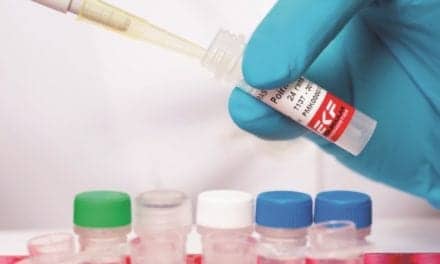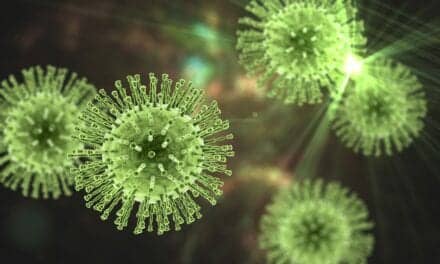Researchers from Korea and China have introduced a novel nano-based tech platform that is designed to shorten the time required for COVID-19 diagnosis.
In a recent study published in Biosensors and Bioelectronics, the researchers detailed their surface-enhanced Raman scattering (SERS)-PCR detection platform—prepared using gold nanoparticles (AuNPs) in the cavities of Au ‘nanodimple’ substrates (AuNDSs)—can detect viral genes after eight cycles of amplification. This is almost one-third of the number required with conventional RT-PCR.
“Conventional RT-PCR is based on the detection of fluorescence signals, so 3–4 hours are required to detect SARS-CoV-2. This speed is not enough considering how rapidly COVID-19 spreads. We wanted to find a way to cut this time at least by half,” says Jaebum Choo, PhD, of Chung-Ang University, explaining the motivation behind the study.
In a previous study published in 2021, Choo’s team had developed a novel detection platform in which high-sensitivity SERS signals are produced by AuNPs uniformly arranged in the cavities of AuNDSs through a technique called DNA hybridization. Based on this previous discovery, Choo and his team developed the novel SERS-PCR platform for COVID-19 diagnosis.
The newly developed SERS-PCR assay uses SERS signals to detect “bridge DNA”—small DNA probes that slowly break down in the presence of target viral genes. Therefore, in samples from patients positive for COVID-19, the concentration of bridge DNA (and therefore the SERS signal) continuously decreases with progressive PCR cycles. In contrast, when SARS-CoV-2 is absent, the SERS signal remains unchanged.
The team tested the effectiveness of their system using two representative target markers of SARS-CoV-2, namely, the envelope protein (E) and RNA-dependent RNA polymerase (RdRp) genes of SARS-CoV-2. While 25 cycles were required for RT-PCR-based detection, the AuNDS-based SERS-PCR platform required only 8 cycles, considerably reducing the testing duration.
“Although our results are preliminary, they provide an important proof-of-concept for the validity of SERS-PCR as a diagnostic technique. Our AuNDS-based SERS-PCR technique is a promising new molecular diagnostic platform that can considerably shorten the time required for gene detection compared to conventional RT-PCR techniques. This model can be further expanded by incorporating an automatic sampler to develop a next-generation molecular diagnostic system,” says Choo.
Featured image: The new SERS-PCR technique could enable more rapid COVID-19 diagnosis, which will help in curtailing the spread of the disease. Photo: Chung-Ang University





